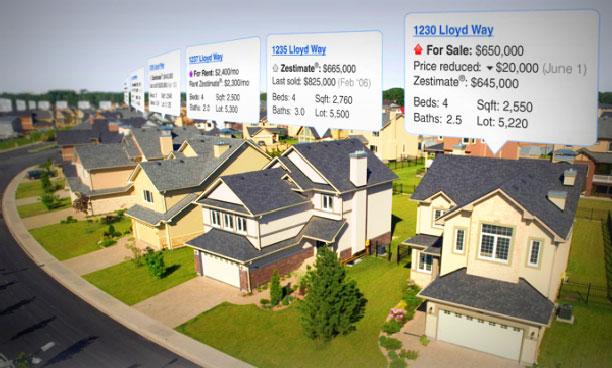Pricing Your Home To Sell
1. Start Online
The Property Valuation Tool provided by Mpls Residential is an estimation of the market value for your specific property, which is calculated on a daily basis using extensive data from MLS by aggregating recently listed and sold properties throughout the region. It serves as an excellent initial reference for conducting your pricing research. Similar to a Zestimate our estimator is more tailored to the local market using concrete market stats verified by end users. It’s worth noting that while automated valuations are useful tools, they are far from perfect. Algorithms don’t know all of the details about your home, including conditions that may substantially decrease value (or add to it!), such as recent upgrades, water views, a proximity to a high-voltage power line, noise levels, positioning on a steep hill, or general buyer sentiment in the area. While it’s a good start, it should not be the final factor in your decision to price your home.
To get your estimate, all you need to do is search your address on our website.
2. Current Market Conditions
It is crucial to have a thorough understanding of the local market when considering selling a property. At the very least, it is important to determine whether it is a buyers or sellers market. Additionally, knowing which months and weeks of the year attract the most buyer traffic is essential. Traditionally, in Minnesota, the optimal time to sell a home, in terms of achieving a higher sales price and reducing the number of days on the market, has been during the first half of May. Homes listed for sale during this period tend to sell approximately one week faster than the average listing duration.
Inventory/Supply: In Economics 101, we were taught the basics of supply and demand, and it applies to real estate. Months’ supply refers to the number of months it would take for the current inventory of homes on the market to sell given the current sales pace.
Sellers Market: refers to a market condition where the demand for homes exceeds the supply of available properties for sale. In a seller’s market, there are typically more buyers than there are homes on the market, leading to increased competition among buyers. We typically would see this as less than 3 months inventory.
Buyers Market: refers to a market condition where there is an abundance of homes for sale but a relatively smaller pool of buyers. In a buyer’s market, the supply of homes exceeds the demand. With more properties available, sellers may face increased competition, leading to longer listing times and potential price reductions. We typically would see this as more than 3 months inventory.
3. Pulling Comps: What’s a CMA?
If you have a real estate agent, they will likely provide you with a Comparative Market Analysis (CMA), which encompasses recent sales in your area by considering factors such as bed/bath count, square footage, year built, home features, days on market, list price and final sale price.
Follow some basic guidelines to find the most accurate comparables
- Same ZIP code, ideally within the same neighborhood or within a radius of a half mile or less.
- Similar square footage, usually within a 10%-15% range of your home.
- Identical bedrooms and bathrooms count.
- Must have sold within the last 90 days.
- Ideally was built around the same time or, similar style home.
- Similar condition/renovation as your home.
Pay attention to neighborhood dividing lines, school districts, and physical barriers, such as major streets, freeways, or railroads. Identical homes directly across the street from each other can vary by as much as $50,000 in some neighborhoods. Make sure you’re comparing apples to apples.
4. A Buyers Point of View
5. Pricing for the Internet
Determining the appropriate price for your home is both an art and a science. Research shows that 57%+ of homes nationwide sell at or above list price if they receive an offer in the first week. Conversely, this drops roughly 10% each subsequent week on the market.
Internet Price Brackets: Nearby all buyers first find a home online – so lets game the system shall we? Factor in the price range your home would fall under on popular online real estate websites. Therefore, if a buyer’s budget falls between $275,000 to $300,000, your home won’t appear in their search results if listed above $309,000. However, by pricing it at $299,900, your home becomes visible in their results, increasing the probability of them seeing your listing. Statistics prove buyers typically search in $50,000 increments when visiting their favorite websites to view real estate listings.
Avoid Top of the Hour Pricing: a well-established psychological phenomenon suggests that pricing items slightly below a round number tends to be more appealing to buyers. For instance, pricing a product at $19.95 instead of $20 can have a positive effect. Similarly, when it comes to selling a house, setting a price of $299,900 might make it appear more approachable compared to a price of $300,000. It is similarly important to avoid pricing a house with a random and unconventional number (such as $303,462) as this can be distracting to buyers and create a negative impression of the seller.
Plan to Stand Out: Price banding involves scrutinizing the current inventory in your neighborhood to determine a less congested price point, as several sellers tend to advertise their properties competitively, resulting in clumped-up prices. For instance, suppose four homes in your neighborhood are priced between $440,000 and $460,000, whereas the next set of houses already start from $490,000 and above. In that case, it’s appropriate to exploit the open $470,000 price band.
6. List vs Sales Price
Establishing an asking price is key. It’s the starting point that influences how people view the property. But sellers must remember real estates golden rule Maximum Price=Maximum Exposure. There is a difference between what a home is listed for sale and what it will eventually close at. Sellers need to realize that using the list price as an advertising tool to draw the maximum number of people to the home is the best way to achieve the highest sales price.
While pricing too high can be a costly mistake that can cost you months of showings and ultimately price reductions, pricing your home too low often brings a frenzy of showings. Properties priced just slightly below market value will often receive multiple offers that will then drive the price up to market level. Pricing is all about supply and demand.
7. An Expert Opinion
Realtor: Real estate agents are pricing specialists who are well-versed in the local market trends and can offer suggestions on how your property fares against others nearby. If you’re struggling to determine the appropriate price point, it’s advisable to consider seeking an agent’s assistance.
Not all listing agents are created equal. An agent who knows your local market and what comparable homes have sold for recently, will know your home’s potential. Interview multiple agents before making a hiring decision. In addition, be sure to come to an agreement about a specific, documented marketing plan before signing a long-term listing agreement with your agent.
Appraiser: Similar to an agent performing a CMA, a home appraiser will consider factors like recent sales of comparable homes as well as details about your home and its location. An appraiser will also perform an in-person walk-through of your home to consider upgrades, additions and other changes you have made to the home that might increase its value.
Appraisers are independent and provide an objective analysis of your home’s value. Typically a home appraisal is performed by the buyer’s lender after a contract has been signed, to ensure that the home is worth the sale price. Lenders don’t want to loan more than the appraised value of a home. But a seller can hire an appraiser anytime as well.
8. Pricing Pitfalls
Sadly pricing errors while evaluating a house is a common occurrence. Imprecise methods are frequently utilized with the hopes of justifying a higher sales price. Avoid these common mistakes when coming to a list price on your home.
Relying on Zillow: The most common misstep we see in the field is determining house prices based on Zillow estimates, as they are not accurate at reflecting one’s home’s market value. Zestimates will often range daily anywhere from 5%-15% given the amount of homes coming and going off the market. Zillow values millions of homes across the nation – they are not on the ground seeing homes as a real estate agent or appraiser would be.
Relying on Assessed Values: Your town or city will likely have an assessed value for your property, which is established to determine the tax structure. Generally, assessed values don’t correlate with the current market value, and one of the common problems with them is that they aren’t updated frequently and have inaccurate information about the homes listing stats (bed/bath counts and square footage). Municipalities typically evaluate values once every 1-3 years, whereas the market can change substantially in as little as six months.
Overpricing Renovations: Although it may seem counterintuitive, not every home renovation guarantees a positive Return on Investment (ROI). Remodeling Magazine’s report in 2022 indicated that the average payback for 22 common professional remodeling projects was just around 62%. In simpler terms, renovations are unlikely to yield a dollar-for-dollar increase in home value. For instance, if your bathroom remodel costs $27,000, the resale value may only see a surge of roughly $16,000.
9. Cut to the Finish Line with an All Cash Offer
Exploring alternative selling methods: If your home is not garnering interest from conventional buyers or you want to skip the hassle of preparing and listing your home with a realtor, you might need to consider other avenues, such as selling to an iBuyer. An iBuyer refers to a real estate company that leverages technology to purchase properties directly using cash. This approach generally offers a faster transaction process and eliminates the need for extensive preparations before selling. However, it’s important to note that iBuyers may not be available in all markets, and certain criteria, such as a specific home style, may be necessary to qualify for their services.
10. Frequent Pricing Questions
How do you motivate buyers outside of pricing?
When a buyer has narrowed down their options to two or three preferred choices, they might require some encouragement to make a decision. To motivate these buyers, sellers often provide incentives such as reducing the interest rate on the buyer’s loan, covering expenses like closing costs, inspections, or repairs, and offering allowances or credits for home upgrades after the sale is finalized.
How do you estimate the price of a home?
Pricing a home is based on careful research using direct comparable sales in terms of size, bed/bath count, and amenities. Looking at sold, pending, and current properties allow you to formulate an accurate price. When looking at pending sales see how many days on market the property has accumulated – if its low you can assume they got near or above ask price.
What happens if your house doesn’t appraise for the purchase price?
In the event that the appraisal value of your home is lower than anticipated, the buyer has the option to negotiate a lower sales price. While the seller is not obligated to decrease the price, the buyer is within their rights to choose not to proceed with the purchase if they are dissatisfied with the disparity between the appraised value and the sales price. Alternatively, the seller may request a second appraisal, but the buyer is not obligated to agree to this request.
Is it Better to Price Your Home High or Low?
Pricing a house lower is better than overpricing. A home priced under value will usually lead to multiple offers and a potential bidding war. Overpriced homes tend to sit on the market, take price reductions, and lose all negotiating power when the inspection and repair items come along.
Does pricing at the average $/ft for my area work for pricing method?
Pricing by square footage is a fair starting point for understanding the range of prices in an area but should not be seen as the end all for pricing. If you have a 3 bedroom home and 3 bedrooms range from $150-$250/sqft you can then use that as a guideline for your pricing range.


